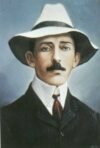The Top 10 Uses of Aviation
Aviation has been and will always be one of the greatest breakthroughs in technological development. Aviation has been the backbone of many industries and has played key roles too for many years.
10. Broadcasting – Broadcasting journalism has benefited greatly from the aviation industry, with the advent of the "news chopper," providing live traffic updates to viewers and listeners. Stations employed helicopters to provide unique views of breaking news events.
9. Public Displays – Air racing has been a spectacular and dangerous high-speed aerial display. Outside of air racing, pilots also display their skills in aerobatic displays and military demos, like those held at the EAA AirVenture air show held annually at Oshkosh. These events also host experimental and home-made aircraft.
8. Aerial Photography – The military world made way for aerial photography, capturing great bird's-eye-views. During the 20th century, cartographers, archaeologists and film makers benefited from an eagle's-eye view. NASA utilized the Ikhana unmanned craft since 2007, photographing wildfires in California to aid firefighters.
7. Agriculture – Hot-air balloons were also utilized in the practice of top dressing. In the 1940s and 1950s, converted World War II aircraft became the standard for crop dusting and farmers benefited on the low-flying planes. In the 1960s, the Piper Pawnee series which was specially designed for agricultural work, came into general use. Today, ag planes come equipped with GPS technologies and can cover more acres per flight than ever before. But crop dusting remains among the more dangerous aviation professions. However, Yamaha's remote-controlled miniature helicopters solved this problem and thousands are currently used in Japan to cultivate rice paddies.
6. Aerial Firefighting – Aerial firefighting started with creative techniques. Water-filled wooden barrels and hoses were the first tools to fight wildfires from above. Eventually, firefighters began dropping retardants such as borate salts. Today, ammonium sulfate and ammonium polyphosphate are emitted from large airtankers.
5. Business – By the 1950s, business trips were a major source of commercial air travel and airplanes allowed professionals to have face-to-face meetings around the country, across the world and more often than was previously possible. Today, business/private aviation is growing and in-demand field.
4. Search and Rescue (SAR) – SAR efforts are conducted around the world in urban areas, in mountains and forests and in oceans, on foot, in aircraft, by ski patrols and even canines. When the Coast Guard came to have its own aviation division, it pioneered the use of helicopters for SAR. SAR air teams have played key roles in disaster relief efforts.
3. Military – Military forces were using aviation to track the movements of their enemies. War brought urgency to the development of military aircraft such as bombers and fighters, which played key roles in every war.
2. Emergency Medical Services – Aviation's one of the most indispensable uses is the transportation of the sick and injured needing medical attention. Helicopters and fixed-wing aircraft alike are used in air emergency medical services.
1. Air Travel – Air travel allowed access to even the most remote parts of the earth and it became indispensable to connect and bridge the gap between people and places.















